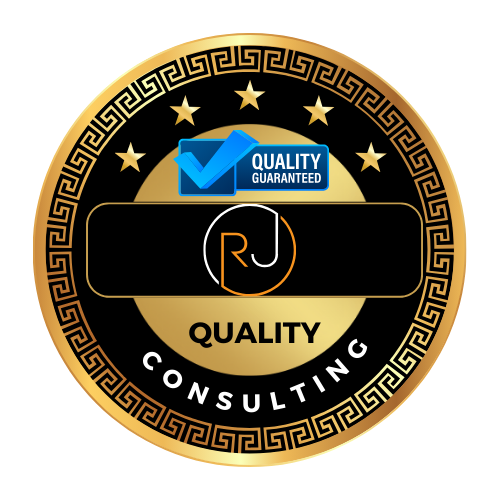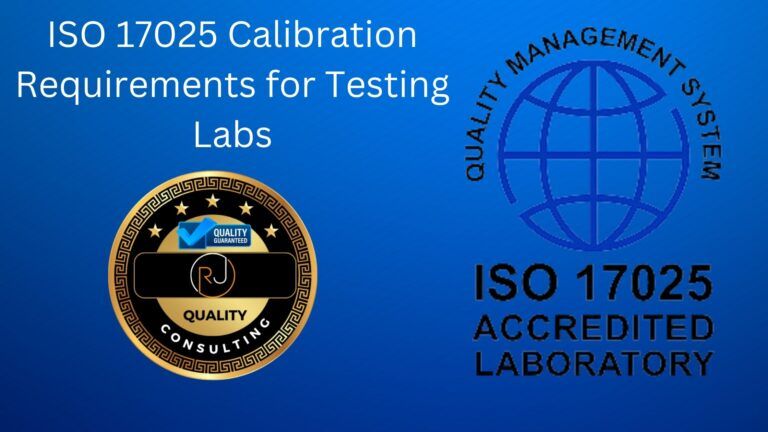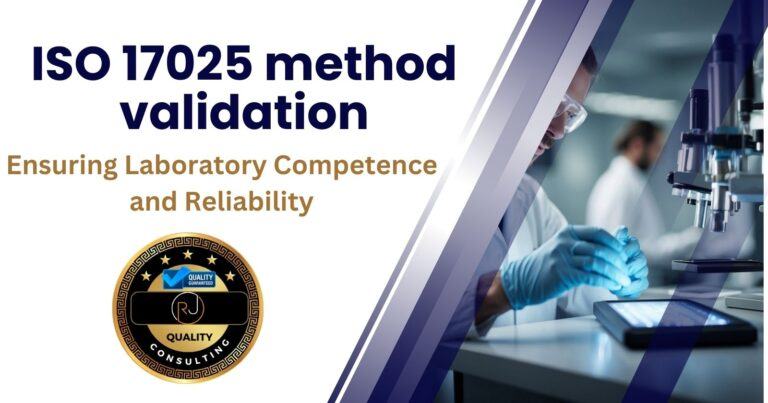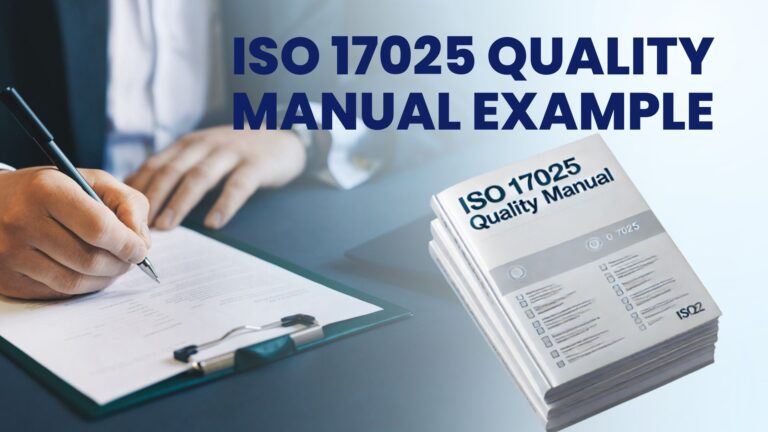What is Quality Control in Testing?: Essential Practices for Ensuring Product Excellence
So, what is quality control in testing? Among other things, quality control in testing is a vital part of software development. It also helps make sure products work well and meet user needs. Quality control in testing checks if a product or service meets set standards through testing and inspection. This process finds and fixes problems before users get the product.

Testing is a big part of quality control. It looks for bugs and issues in software. Testers try out different parts of a program to see if they work right. They also check if the software does what it’s supposed to do. This helps catch problems early, saving time and money.
Quality control is not just about finding errors. It’s about making better products. When you test and check your work, you learn how to improve it. This leads to happier customers and better business results.
📘 ISO/IEC 17025 Quality Manual Template
Accelerate your lab’s accreditation process with our comprehensive Quality Manual Template, designed to align with ISO/IEC 17025:2017 standards.
- Fully editable and customizable to fit your laboratory’s needs.
- Includes all necessary procedures, forms, and policies.
- Structured to facilitate easy implementation and compliance.
- Developed by experts with extensive ISO/IEC 17025 experience.
Key Takeaways
- Quality control ensures products meet standards through testing and inspection
- Testing finds bugs and issues in software before users get the product
- Quality control improves products, leading to happier customers and better business results
Conceptual Overview Video for what is quality control in testing
Quality control in testing is a vital process that ensures products meet standards and customer expectations. It involves examining, measuring, and testing to verify quality requirements are fulfilled.
Quality Control Versus Quality Assurance
So, what is quality control vs quality assurance?
Quality control (QC) and quality assurance (QA) are different but related concepts in testing. QC focuses on finding and fixing defects in products. It’s a reactive process that happens after development. QA is proactive and aims to prevent defects from occurring. It covers the entire development lifecycle.
QC involves testing specific products or batches. QA sets up processes and standards for the whole organization. While QC checks if a product meets requirements, QA makes sure the right processes are in place to create quality products.
Importance of Quality Control in Testing
Quality control is crucial in testing for several reasons:
- It helps catch and fix bugs before release
- It ensures products meet customer needs
- It saves time and money by preventing costly recalls
- It builds trust and loyalty with customers
- It improves the overall reputation of your company
By implementing strong QC practices, you can reduce risks and increase the chances of project success. It also helps you stay competitive in the market by delivering reliable, high-quality products.
Key Principles of Quality Management
Quality management encompasses both QC and QA. Its key principles include:
- Customer focus: Understanding and meeting customer needs
- Leadership: Setting clear goals and direction
- Engagement of people: Involving all employees in quality efforts
- Process approach: Viewing activities as interconnected processes
- Continuous improvement: Always looking for ways to get better
- Evidence-based decision making: Using data to guide choices
- Relationship management: Working well with partners and suppliers
These principles guide how you approach quality in your testing processes. They help create a culture of quality throughout your organization.
What is the Quality Control in Testing Process?

Quality control in software testing involves several key steps to ensure product quality. These processes help catch issues early and maintain high standards throughout development.
Implementing Quality Control in Software Development
You should integrate QC at every stage of software development. Start with clear requirements and design specifications. Test early and often, using techniques like unit testing and code reviews. Automate repetitive tests where possible.
Set up a bug tracking system to log and prioritize issues. Make sure developers can easily reproduce and fix reported problems. Regular team meetings help everyone stay aligned on quality goals.
Create a dedicated QC team to oversee testing efforts. They should work closely with developers but remain independent to maintain objectivity.
Documentation and Standard Operating Procedures
Good documentation is crucial for consistent QC. Write clear, step-by-step procedures for all testing activities. Include test cases, expected results, and pass/fail criteria.
Keep your documentation up-to-date as the software evolves. Use version control to track changes. Make sure all team members have access to the latest procedures.
Create templates for test plans, bug reports, and other common documents. This saves time and ensures important details aren’t missed.
Train new team members using your documentation. This helps maintain quality standards as your team grows.
Quality Audits and Inspections
Regular audits help verify that QC processes are being followed. Schedule periodic reviews of test plans, results, and documentation. Look for gaps or areas where procedures aren’t being followed consistently.
Conduct both internal and external audits. Internal audits by your own QC team can catch issues quickly. External audits provide an unbiased perspective and may be required for certain certifications.
Use checklists to ensure all aspects of the QC process are examined. Follow up on any issues found and track improvements over time.
Statistical Process Control and Quality Control Methods
Apply statistical methods to analyze test results and identify trends. Use control charts to monitor key quality metrics over time. This helps spot issues before they become major problems.
Implement sampling techniques for large-scale testing. Random sampling can provide insights into overall quality without testing every single scenario.
Use tools like Pareto analysis to prioritize the most impactful defects. Focus your efforts on fixing issues that will have the biggest impact on quality.
Track and analyze defect rates, test coverage, and other key performance indicators. Use this data to continuously improve your QC processes.
What is the Quality Control in Testing Strategies?

Testing strategies are crucial for ensuring software quality. They guide how tests are planned, designed, and executed. Effective strategies balance manual and automated approaches while leveraging data to improve outcomes.
Test Planning and Design
Test planning starts with defining goals and scope. You need to identify what features to test and how thoroughly. Create a test plan that outlines schedules, resources, and test environments.
Design test cases that cover different scenarios. Focus on both positive and negative tests. Prioritize tests based on risk and importance. Use techniques like boundary value analysis and equivalence partitioning to create effective test cases.
Consider using a test matrix to track test coverage across features and test types. This helps ensure you don’t miss critical areas.
Manual Versus Automated Testing
Manual testing involves testers executing tests step-by-step. It’s good for exploratory testing and user experience evaluation. You can catch issues that automated tests might miss.
Automated testing uses scripts to run tests quickly and repeatedly. It’s ideal for regression testing and checking large datasets. Automation saves time on repetitive tasks and reduces human error.
A balanced approach often works best. Use manual testing for new features and complex scenarios. Automate stable, repeatable tests. This combination improves efficiency while maintaining test quality.
Adopting a Data-Driven Approach to Testing
Data-driven testing uses different input values to run the same test multiple times. You store test data in external files or databases. This separates test logic from test data.
Benefits include easier test maintenance and expanded test coverage. You can quickly add new test scenarios by updating data files. This approach works well for testing with large datasets.
Use tools to generate and manage test data. Track test results to identify patterns and problem areas. Analyze this data to refine your testing strategy over time. Data-driven testing helps you make informed decisions about where to focus testing efforts.
Quality Assurance in Testing

Quality assurance in testing focuses on preventing defects and ensuring high-quality software through proactive processes. It involves establishing standards, implementing management systems, and fostering a culture of continuous improvement.
The QA Process and Management Systems
The QA process starts with planning and setting quality objectives. You’ll create a quality management plan that outlines procedures, responsibilities, and standards. This plan guides your testing activities throughout the project lifecycle.
Key elements of QA management systems include:
- Document control
- Change management
- Risk assessment
- Training programs
- Metrics and reporting
These systems help you track progress, manage resources, and maintain consistency in your testing approach. By following structured processes, you can identify and address potential issues early, saving time and resources in the long run.
Ensuring Compliance with Quality Standards
Compliance with quality standards is crucial in QA testing. You need to be familiar with industry-specific regulations and best practices. Some common standards include:
- ISO 9001 for quality management
- IEEE 829 for software test documentation
- ISTQB for software testing certification
To ensure compliance:
- Review requirements regularly
- Conduct internal audits
- Maintain thorough documentation
- Provide staff training on standards
By adhering to these standards, you improve the reliability and consistency of your testing processes. This leads to higher quality products and increased customer satisfaction.
Continuous Improvement and Employee Involvement
Continuous improvement is a key aspect of QA in testing. You should regularly assess your processes and look for ways to enhance efficiency and effectiveness. This involves:
- Analyzing test results and metrics
- Gathering feedback from team members
- Staying updated on new testing tools and methodologies
Employee involvement is crucial for successful QA. Encourage your team to:
- Suggest process improvements
- Participate in quality circles
- Attend training and certification programs
By fostering a culture of continuous improvement and involving employees, you create a more engaged and skilled workforce. This leads to better testing outcomes and higher-quality software products.
Quality Control Tools and Techniques

Quality control in testing uses various tools and methods to ensure software meets high standards. These approaches help catch bugs early and improve the overall product quality.
Utilizing Quality Control and Testing Tools
Testing tools like Selenium help automate test cases and speed up the process. You can use Selenium to run tests across different browsers and platforms. Testsigma is another powerful tool that allows you to create and run automated tests without coding skills.
These tools let you:
- Run repetitive tests quickly
- Test on multiple devices at once
- Generate detailed reports
By using the right tools, you can catch more bugs and improve test coverage. This leads to better quality software and happier users.
Integration of Testing Activities in Development Life Cycle
Testing should be part of every stage of software development. You need to start testing early and often. This approach is called “shift-left testing.”
Key steps:
- Plan tests during requirements gathering
- Write unit tests as you code
- Run integration tests when combining components
- Perform system tests before release
By testing throughout the software development life cycle, you catch issues faster. This saves time and money in the long run.
User Experience and Performance Testing
User experience (UX) testing makes sure your software is easy to use. You should test with real users to get feedback on the design and features.
Performance testing checks if your software can handle heavy loads. You need to test:
- Response times
- Server resource usage
- Stability under stress
Tools like Apache JMeter can help with load testing. By focusing on UX and performance, you ensure your software not only works but works well for users.
International Standards and Frameworks
Quality control in testing relies on widely accepted standards and methods. These help ensure consistent, high-quality results across industries and organizations.
ISO 9000 and ISO 9001 Certification
ISO 9000 is a set of standards for quality management systems. It gives you guidelines to make your processes better and more efficient. ISO 9001 is part of this family. It sets out the rules for a quality management system.
To get ISO 9001 certified, you need to:
- Document your processes
- Train your staff
- Pass an audit
This certification shows customers you care about quality. It can help you win more business and improve your work.
Total Quality Management (TQM) and Six Sigma
TQM is a way to make quality everyone’s job. It focuses on meeting customer needs and constant improvement. In TQM, you:
- Listen to customers
- Measure everything
- Work as a team
- Fix problems fast
Six Sigma is a method to reduce errors. It uses data and stats to find issues. The goal is to have no more than 3.4 defects per million chances.
Both TQM and Six Sigma can help you make better products and keep customers happy.
Standards and Methodologies in Quality Control
Many other standards help with quality control in testing. Some key ones are:
- ISO/IEC 17025: For testing and calibration labs
- CMMI: Helps improve software development
- IATF 16949: For the auto industry
You can also use methods like:
- Lean: Cuts waste in processes
- Kaizen: Makes small, ongoing improvements
- 5S: Keeps workplaces clean and organized
Pick the standards and methods that fit your needs best. Use them to make your testing more accurate and reliable.
Measuring Quality and Customer Focus
Assessing Product Quality and Defects
You need to check products closely for issues. Look for flaws in how they work and how they look. Count how many defects you find. Track where problems happen most often.
Make a list of quality standards. Check each product against these rules. Use tools to measure things like strength or accuracy. Take photos of good and bad examples.
Keep records of all your quality checks. Make charts to show trends over time. This helps you spot areas that need work.
Customer Requirements and Satisfaction
Ask your customers what they want. Make surveys to learn about their needs. Listen to their feedback and complaints.
Check if your products meet these needs. Test your items the way customers will use them. Fix any problems you find quickly.
Send follow-up surveys after purchases. Ask how happy customers are. Look for patterns in their answers. Use this info to make your products better.
Brand Reputation and Customer Loyalty
Your brand’s good name depends on quality. Bad products can hurt how people see you. Good ones make customers trust you more.
Watch what people say about you online. Check review sites and social media. Respond to both good and bad comments.
Reward loyal customers. Give them special deals or early access to new items. Ask them for ideas on how to improve.
Keep track of how many customers come back. A high number means you’re doing well. If it drops, find out why and fix it fast.
Frequently Asked Questions
Quality control in testing involves various methods and applications across industries. It differs from quality assurance and plays a crucial role in many sectors. Let’s explore some common questions about quality control practices and approaches.
How does software testing implement quality control?
Software testing quality control uses techniques like code reviews and automated tests. Developers check each other’s code for bugs and style issues. Automated tests run to catch errors before releasing new versions.
Test cases cover different parts of the software. These ensure it works as expected. Manual testing also helps find usability problems that automated tests might miss.
Can you give examples of quality control in different industries?
In food production, workers check ingredients and final products for contamination. They use lab tests to verify safety and quality.
Car makers inspect parts and do road tests on finished vehicles. This helps catch defects early.
Airlines have strict maintenance checks. Pilots also go through pre-flight checklists to ensure safety.
What distinguishes quality control from quality assurance in project management?
Quality control focuses on finding and fixing defects in the final product. It involves testing and inspections.
Quality assurance aims to prevent defects by improving processes. It sets up standards and procedures to follow during the project.
QC happens at the end, while QA runs throughout the project lifecycle.
What are the fundamental types of quality control in manufacturing?
Statistical quality control uses data to monitor production processes. It helps identify when things go wrong.
Visual inspections let workers spot obvious defects quickly. They can check products against standards.
Sampling involves testing a few items from each batch. This approach saves time while still catching major issues.
Why is quality control essential in pharmaceutical testing?
Pharmaceutical testing ensures medicines are safe and effective. It checks for correct ingredients and dosages.
Quality control prevents harmful drugs from reaching patients. It also makes sure treatments work as intended.
Strict regulations require thorough testing of all medications. This protects public health and builds trust in pharmaceuticals.
What techniques are commonly used for quality control?
Six Sigma is a data-driven method to reduce defects. It aims for near-perfect quality in manufacturing and services.
Failure Mode and Effects Analysis (FMEA) looks at potential problems before they happen. It helps prevent issues in complex systems.
Control charts track processes over time. They show when a process is stable or needs adjustment.
🕒 Book Your Free 45-Minute Consultation
Have questions about ISO/IEC 17025 or ISO 9001 implementation or accreditation? Schedule a free 45-minute consultation with me to discuss your Company or laboratory’s needs and how we can achieve compliance together.
Schedule Your Consultation





